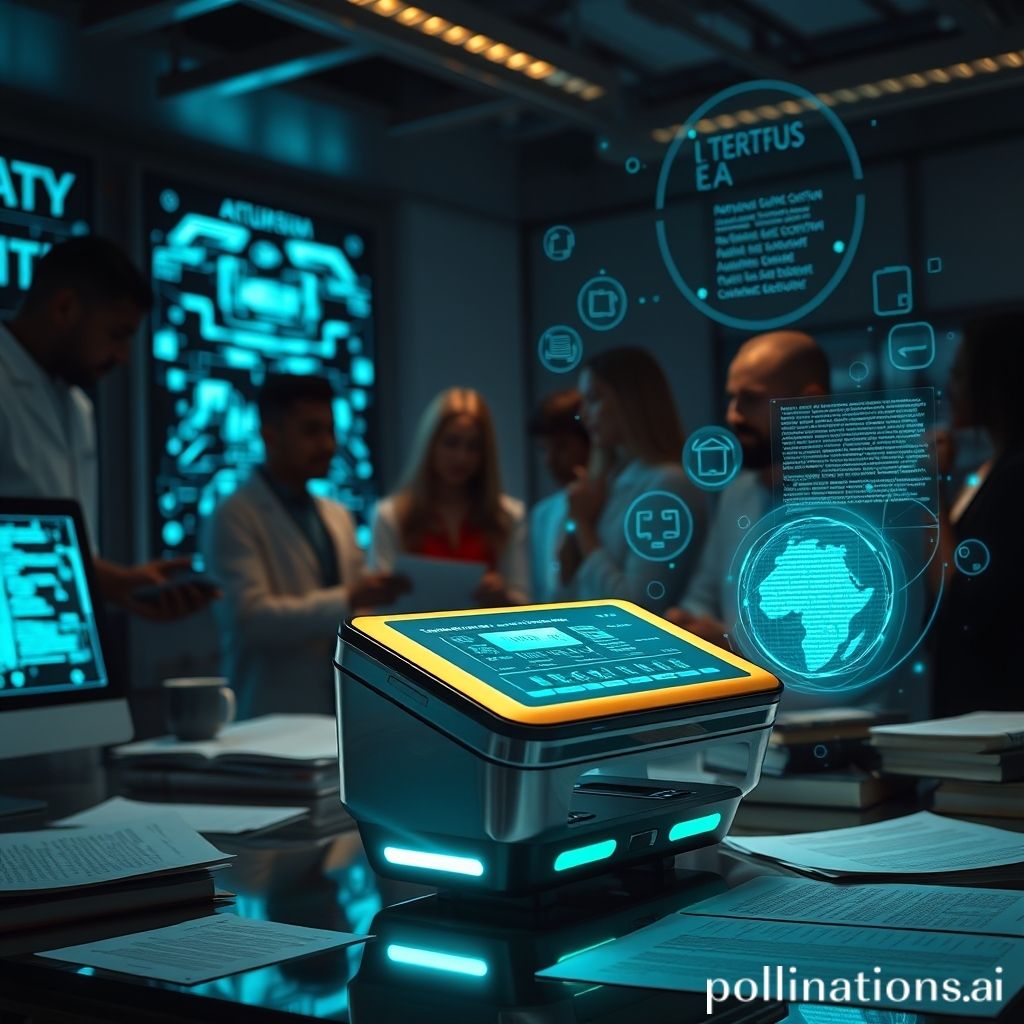Table of Contents
- Introduction
- Understanding Turnitin’s Detection Capabilities
- Differences Between Human and AI-generated Content
- AI Writing Tools and Their Common Uses
- AI-generated Content in Content Creation and SEO
- Turnitin’s Approach to Identifying AI Writing
- The Role of Automated Workflows in Content Creation
- Educational Institutions’ Perspective on AI-generated Content
- Future Trends in AI Writing Detection and Content Generation
- Conclusion
- Frequently Asked Questions
Introduction
In the digital age, the integrity of academic work is being tested like never before. As AI-generated text becomes increasingly sophisticated, the burning question on everyone’s mind is: can Turnitin detect AI writing? This article dives deep into the cutting-edge innovations in plagiarism detection technology, examining how far we’ve come and what lies ahead.
With instances of AI-assisted writing on the rise, educators and students alike are curious and concerned about what this means for the future of academic honesty. Turnitin, a well-established name in plagiarism detection, is now at the forefront of this technological revolution. But how effective is it really against the latest advancements in AI writing?
Understanding Turnitin’s Detection Capabilities
Imagine walking into a library that knows every book ever written and whispers to you, ‘I know where that sentence came from.’ That’s Turnitin for you. It’s a seasoned detector in an ocean of essays, catching the waves of words that seem a bit too familiar. Originally designed to spot plagiarism, it has now donned a cape, trying to tackle the sneaky villain of AI-generated content.
Turnitin’s been around the block, like an old detective who’s seen it all. It uses a mix of algorithms to hunt down copied content, and now, it’s sharpening its skills to recognize AI writing. It’s a bit like trying to find a needle in a haystack, only this needle sometimes tries to disguise itself as a piece of straw. The technology looks for patterns, unusual phrases, and inconsistencies that might hint at an AI’s handiwork. You see, AI tends to leave behind footprints — a certain repetitiveness, a lack of genuine human quirks.
However, let’s not kid ourselves; it’s a game of cat and mouse. Just when Turnitin thinks it has the upper hand, AI technology evolves, making it a thrilling, endless chase. Don’t we just love a good detective story?
Differences Between Human and AI-generated Content
Ever wondered how human and AI-generated content stack up against each other? Well, let’s dive in. Picture this: you’re at a coffee shop, and two friends are having a lively chat. They use sarcasm, recall inside jokes, and sprinkle their conversation with emotion. That’s human content for you—dynamic, unpredictable, and bursting with personality.
On the flip side, AI-generated content is like a well-oiled machine. It’s efficient, consistent, and sticks to the point. When you ask an AI to write, you get clear, structured sentences. But, sometimes, it feels a bit like you’re reading an instruction manual. There’s information, but that spark of human touch? Not quite there.
Imagine reading a bedtime story. A human writer might weave in whimsical characters and cliffhangers that make kids’ eyes widen. AI might deliver the facts straight, but without the magic dust that makes a story memorable.
One major difference is creativity. While humans can take a quirky idea and run wild with it, AI’s creativity is bounded by its programming and data. Sure, AI can produce impressive content, but it doesn’t dream or ponder.
So, in a nutshell, while AI-generated content can be impressively accurate and to the point, it often misses the mark in capturing the essence of human experience.
AI Writing Tools and Their Common Uses
AI writing tools have become quite the rage lately, haven’t they? These digital maestros are capable of churning out content for a variety of purposes. For instance, businesses often use AI to create engaging blog posts that can grab readers’ attention like a magnet. Imagine a tool whipping up a compelling product description faster than you can say ‘supercalifragilisticexpialidocious’!
And let’s not forget about the e-commerce sector. Ever checked out those snappy, attention-grabbing online ads? Yep, many of them are crafted by AI. It’s like having a creative director on call 24/7. AI tools are also elbow-deep in social media, churning out posts that make you stop mid-scroll.
Students, too, find these tools a godsend when tackling essay assignments or drafting complex research papers. Imagine having a virtual assistant who never sleeps and helps you meet tight deadlines. These tools serve as brainstorming buddies, ensuring you never run out of ideas.
In the world of journalism, AI can quickly summarize long reports, saving precious time for reporters. By now, it’s clear that AI writing tools are jacks-of-all-trades, adding a touch of magic wherever they’re used.
AI-generated Content in Content Creation and SEO
AI-generated content is shaking things up in the world of content creation and SEO. Imagine waking up one day to discover robots are now your writing buddies! Well, it’s not exactly science fiction anymore. AI tools, like OpenAI’s GPT-3, can whip up articles, blog posts, and even creative stories faster than you can say ‘jack of all trades’.
From SEO perspectives, these digital scribes are a double-edged sword. On one hand, they churn out keyword-rich content in the blink of an eye. That’s a golden ticket for businesses looking to climb Google’s ranks without breaking a sweat. However, it’s not a bed of roses. Search engines are getting smarter, sensing when content is just a bunch of keywords scrambled together. Authenticity and engagement matter more than ever.
Then there’s the irony. AI creates content to boost SEO, yet if overused, it might backfire. Think of it like adding too much salt to your soup; a pinch enhances the flavor, but go overboard and it’s game over.
So while AI can be your trusty sidekick in content creation, it’s a balancing act. Just like a tightrope walker, one misstep and you’re tumbling down the SEO ladder.
Turnitin’s Approach to Identifying AI Writing
Turnitin, ever the vigilant watchdog in the academic world, has raised its game to tackle a new challenge: identifying AI-generated writing. Yeah, you heard that right! AI writing detection is now part of its arsenal. But how do they pull off this high-wire act? Transitioning from one era to another, Turnitin is diving deep into the ocean of machine learning and stylistic analysis.
Imagine a seasoned detective, sniffing out clues with an uncanny accuracy. Turnitin uses advanced algorithms trained to spot nuances—like a chef discerning the perfect blend of spices in a complicated dish. These algorithms can identify the robotic tone and lack of human touch synonymous with AI texts. Think of it like catching inconsistencies in a seamless tapestry; the slightest slip, and the trained eye spots the automated handiwork.
But it’s not all cloak and dagger. They also cross-reference existing databases, comparing submissions against a vast literature of known writings. It’s like having a digital twin of Sherlock Holmes, meticulously piecing together a puzzle. This, my friend, helps educators take the upper hand in the never-ending game of academic integrity.
The Role of Automated Workflows in Content Creation
In today’s bustling world of content creation, automated workflows have become like invisible elves, working tireless behind the scenes, shaping our words and ideas with pixie dust and precision. Imagine having a magical pen that never runs out of ink, so whenever inspiration strikes, you’re ready to jot it all down. Well, automated workflows are kinda like that. They’re the unsung heroes that help writers and creators keep up with the relentless demand for fresh content.
With automated workflows, tasks that used to take hours can now be completed in minutes. They’re like a well-oiled machine, humming along smoothly, ensuring that every piece of content is polished to perfection. Whether it’s scheduling social media posts, managing email campaigns, or organizing massive content calendars, these workflows keep everything running like a well-rehearsed symphony.
But hey, it’s not just about saving time. Automated workflows also help maintain consistency and quality across the board. They make sure that each word, sentence, and paragraph sings in perfect harmony, creating a melody that resonates with the audience. So, the next time you enjoy a beautifully crafted piece of content, remember the magic of automated workflows working tirelessly in the background.
Educational Institutions’ Perspective on AI-generated Content
From the viewpoint of educational institutions, AI-generated content is like a double-edged sword. On one hand, it’s a marvel of modern technology, opening doors to new ways of learning and information synthesis. On the other hand, it poses a threat to academic integrity and original thought, turning the classroom into a battleground of man versus machine. For instance, universities worry that students might use AI to cut corners, creating essays and reports with the click of a button, thereby undermining the educational process.
Picture this: a professor receives an essay that reads like a Shakespearean play, filled with sophisticated language and perfect grammar. At first glance, it seems extraordinary. However, a gnawing doubt lingers—did the student really write this? The irony is that while AI aims to elevate education, it also risks devaluing genuine effort and creativity.
Moreover, schools are ramping up their defenses, employing software like Turnitin to sniff out AI-generated content. There’s a sense of foreshadowing here; as technology advances, so will the tools to detect its misuse. It’s a cat-and-mouse game, with educational bodies striving to stay one step ahead of crafty students.
Future Trends in AI Writing Detection and Content Generation
The future of AI writing detection and content generation is like a wild roller coaster ride, full of twists and turns. One moment, you’re cruising along, and the next, you’re diving into the unknown. As AI technology keeps advancing, detection tools like Turnitin are sharpening up their sleuthing skills. They’re becoming more adept at sniffing out AI-generated content, almost like a bloodhound on the trail of a scent.
However, it’s not just a one-way street. On the flip side, AI writing tools are getting smarter, more nuanced, and eerily human-like. It’s like watching a cat-and-mouse game. As detection algorithms improve, so too do the methods AI uses to mimic human writing. Will AI ever master the art of writing so well that it becomes indistinguishable from human work? Who knows.
With technological advancements on the horizon, there’s a sense of anticipation. Picture a world where AI is not just a tool but a creative partner, adding a dash of brilliance to human ingenuity. But, as with every powerful tool, it doubles as a double-edged sword, stirring up ethical dilemmas and questions about authenticity. Only time will tell where this fascinating journey leads us.
Conclusion
As the landscape of content creation evolves, leveraging advanced tools like Turnitin and AI writing detection becomes paramount. The distinctions between human and AI-generated content are crucial for maintaining authenticity and academic integrity. Moreover, AI writing tools are increasingly indispensable in various sectors, from e-commerce to education, offering efficiency and creativity. However, the cat-and-mouse game between AI-generated content and detection tools like Turnitin continues to intensify.
It’s clear that the future of content creation and detection will be an exciting journey, filled with innovation and ethical considerations. To stay ahead in this rapidly changing environment, utilizing state-of-the-art tools is essential. Businesses and educational institutions must embrace these technologies to maintain a competitive edge.
Don’t get left behind in this digital age. Ensure your content strategy is cutting-edge by incorporating advanced tools. One such tool is WPHorde, designed to revolutionize your approach to content creation and SEO. Take action now and elevate your content game with WPHorde!

